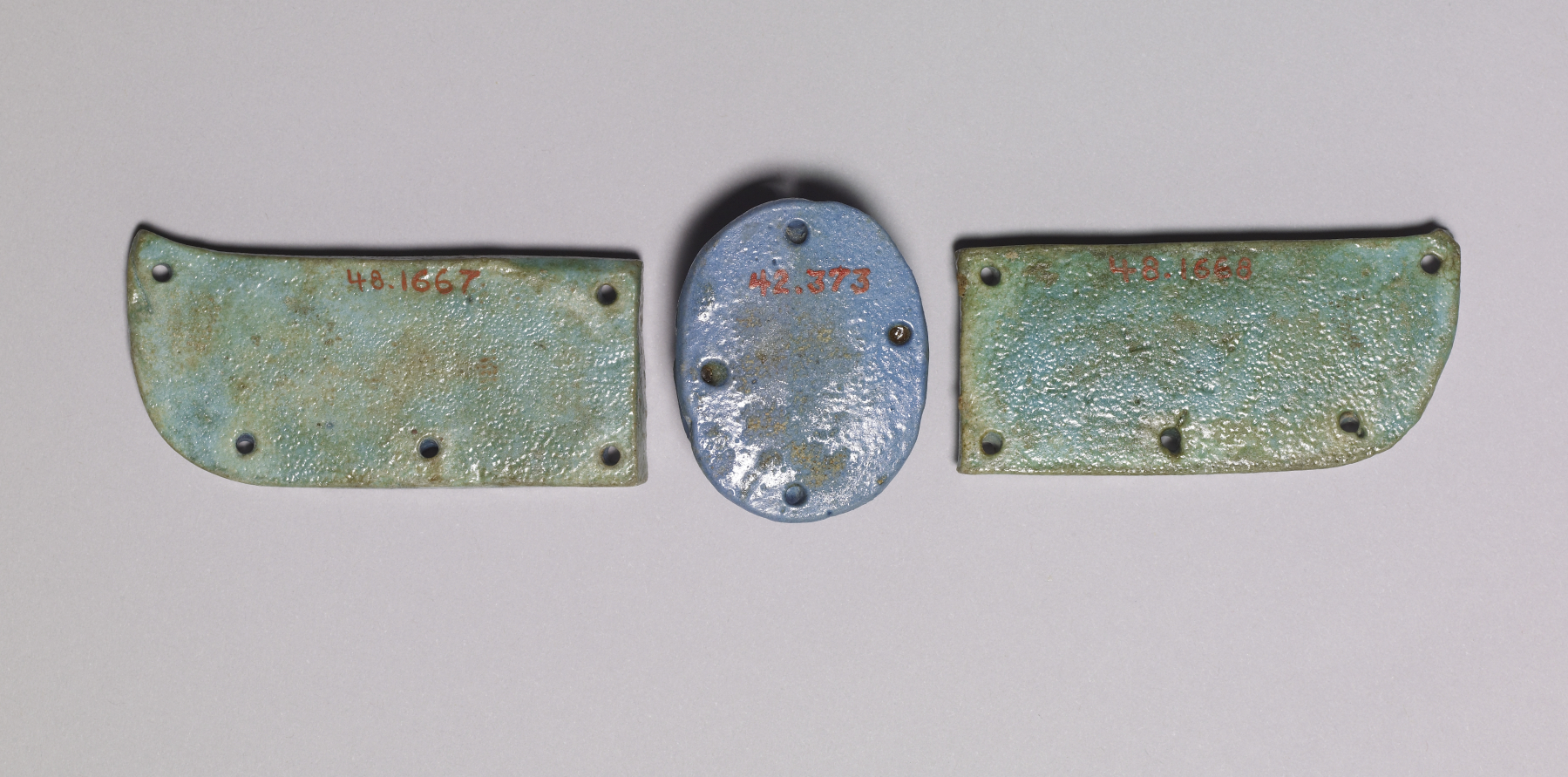Scarab with Wings
(Ancient Egypt and Nubia )
A faience scarab amulet with a blue glaze. In some areas the glaze is worn and the matrix of the material is visible. The elements of the head, and body have been formed in relief. This type of scarab often had attachable wings. The scarabs from this period are usually about 5 cm long and most often are blue in color. An incised ridge along the lower side forms a narrow base.
Numerous funerary amulets were usually placed among the many layers of linen strips used to wrap mummies. Specific amulets, along with their required position on the body, are listed in funerary texts such as "The Book of the Dead." Amulets were sometimes sewn directly onto the wrappings or could be incorporated into a bead net shroud covering the mummy. These amulets have been modeled with a flat underside and are pierced by tiny holes around the edges for attachment. The winged scarab is a potent symbol of resurrection and rebirth. The protective deities represented are connected with the myth of Osiris.
Provenance
Provenance (from the French provenir, 'to come from/forth') is the chronology of the ownership, custody, or location of a historical object. Learn more about provenance at the Walters.
Henry Walters, Baltimore [date and mode of acquisition unknown]; Walters Art Museum, 1931, by bequest.
Geographies
Egypt (Place of Origin)
Measurements
11/16 x 1 5/16 x 1 5/8 in. (1.7 x 3.3 x 4.1 cm)
Credit Line
Acquired by Henry Walters, by 1931
Location in Museum
Accession Number
In libraries, galleries, museums, and archives, an accession number is a unique identifier assigned to each object in the collection.
In libraries, galleries, museums, and archives, an accession number is a unique identifier assigned to each object in the collection.
VO.8 (42.373, 48.1667, 48.1668)




